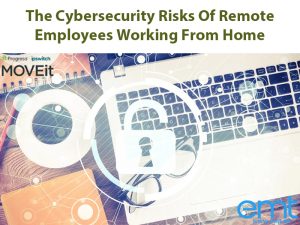These days, having data readily available is considered a key competitive advantage. However, there are a number of risks associated with 24/7 accessibility from anywhere in the world. Devices can be lost or stolen. And the threat of hacker attacks looms when cloud services are used. Taking mobile security to the next level is essential, and this is where unified endpoint management solutions have become indispensable.
Protecting data from unwanted data leaks, manipulation, and unauthorized access is an ongoing challenge. This is true regardless of whether it is stored in the cloud or on your own mobile hardware. Companies have to ensure that a physical loss of a laptop, tablet, smartphone, or external data carriers does not lead to a major incident – namely, unauthorized persons gaining access to confidential and sensitive data. Users are not necessarily on the safe side if they use cloud services either. This is where it is necessary to prevent potential hacker attacks, or to at least mitigate their consequences. In both situations, the problem lies in increasingly widespread bring-your-own-device approaches (BYOD). These pose a high IT risk above all – for example, if employees store important company data unprotected and unencrypted on private devices. This not only calls for high security standards in the internal IT infrastructure, but also monitoring of each individual device used.
Monitoring, filtering, logging, and encryption
Several steps are necessary to uphold maximum IT security. First of all, the controllers should monitor, filter, and log access to data across all interfaces. What’s more important is to encrypt all data during all operations. It’s also essential to remember that comprehensive protection can only succeed if the measures put in place are implemented across the board.
Please note: Logging is a requirement of the EU’s General Data Protection Regulation (GDPR). However, it must be ensured that the logging of user activities is implemented in accordance with worker committee or staff representative requirements.
The best option is to coordinate solutions and have them act in tandem. For example, you can use logging to record unencrypted data transfer. It is recommended that the IT department are alerted immediately in the event of abnormal activities in logging data access so that they can act right away. This can be implemented as part of interface monitoring. If, in spite of all security measures, malware infects your hardware or there is a risk of data loss, the IT managers have to be notified immediately, and automated workflows initiated right away.
Please note: Security measures must always be implemented so that they are enabled both online and offline. In terms of data encryption, this should be done on-the-fly and hardware-independent, not to mention across all devices, including Windows and macOS computers, Linux systems, IoT devices, and smart devices/smartphones.
When companies implement a BYOD approach, it is recommended that they provide users with protection similar to the IT infrastructure in place within the company for their private devices. This means, for example, that data encryption is extended to private mobile devices as well. Separating private and business data on any device is also essential. However, another problem arises when all security measures have been implemented, as many companies run the risk of having built a fortress around their data – which means that they lose mobility and user-friendliness. For example, this can result in data becoming stuck behind firewalls, making it difficult to access. User acceptance takes a hit if users need to enter passwords or are faced with a VPN gateway every time they need to retrieve data. This means that it is important to ensure fast and uncomplicated data access while still upholding all necessary security standards.
Security thanks to the “baked-in” approach
As with many IT processes within companies, there is no way of avoiding central administration when it comes to security. As part of the integrated approach of unified endpoint management and endpoint security solutions, not only maximum security, but also agile management is possible – for example, when installing new hardware or using cloud services. Here, it is considered important to activate appropriate security measures such as encryption and logging, as well as malware protection. If security-related incidents occur, the incident must be reported immediately to the Service Desk and further workflows initiated. Combining this with service management solutions, for example, is advisable here. When it comes to mobile devices, using container apps – which can separate private and business data such as telephone numbers and e-mails – is also recommended.
Looking forward: data security and the GDPR
Many companies and public authorities still do not think enough about the security of mobile workplaces. Better education and awareness are needed to reduce the risk of data loss and targeted hacker attacks. While the GDPR has been positive in terms of putting the protection of personal data in the foreground, data security within many IT departments has not yet reached a sufficient standard in the planning, conception, and implementation of IT projects. Generally speaking, all parties involved need to have a rethink when it comes to how best to handle this issue.
Source: https://www.matrix42.com/blog/2019/12/02/take-mobile-security-to-the-next-level/






